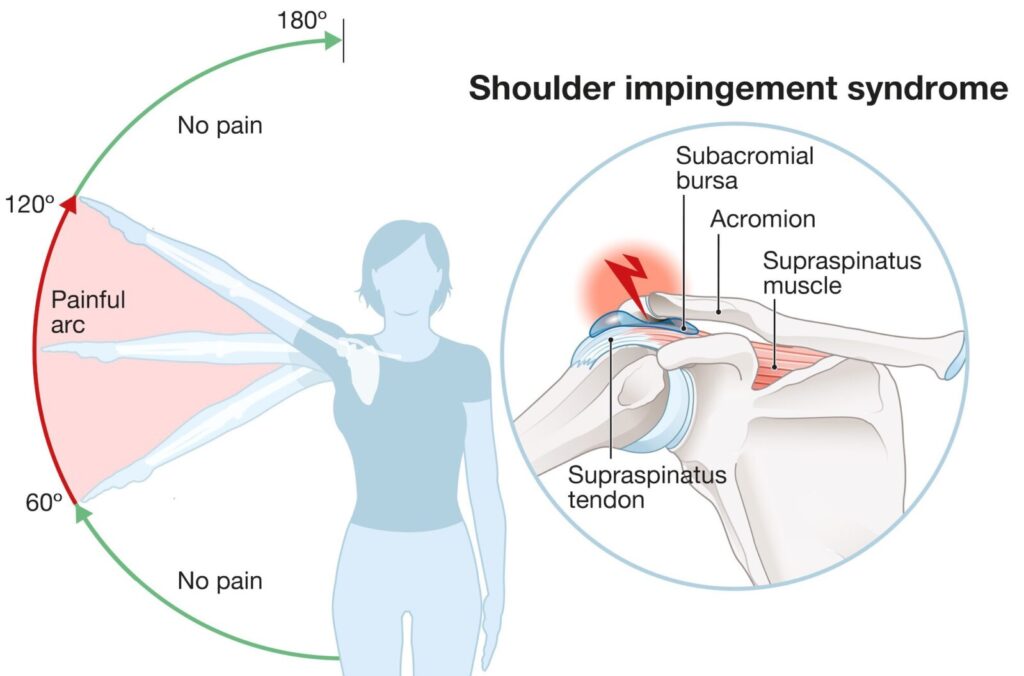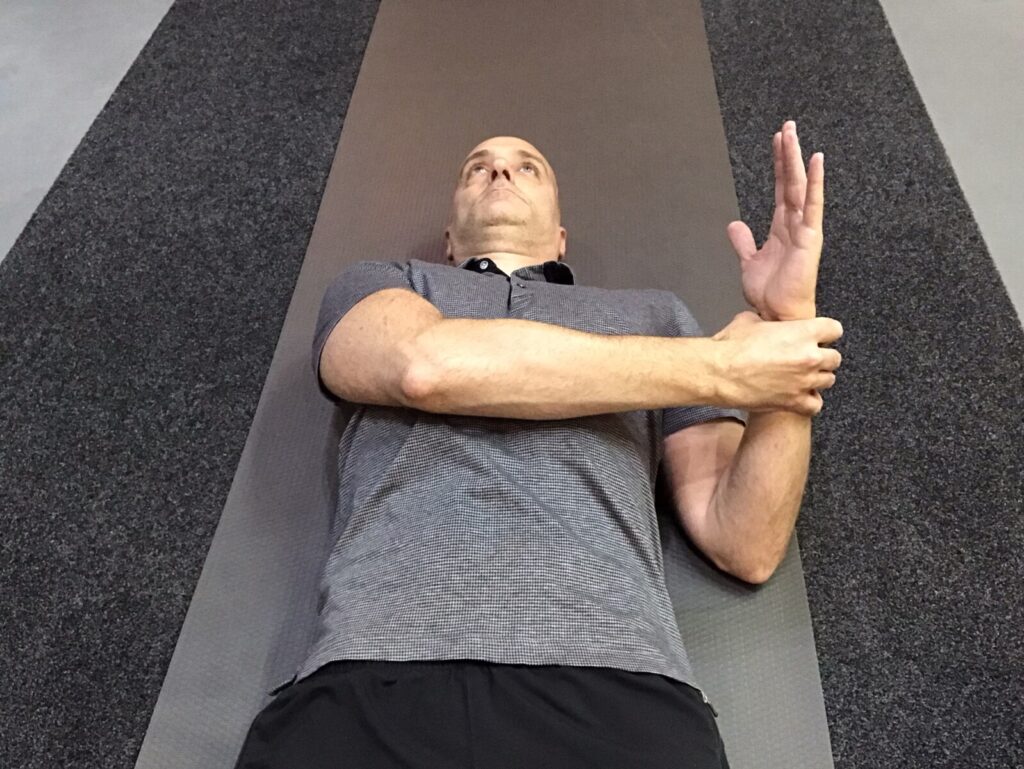In this post we discuss why physio isn’t working for your shoulder impingement and what you can do now.

At a glance
If physio hasn’t helped your shoulder impingement, it’s probably because the prescribed exercises weren’t personalised enough.
Shoulder impingement isn’t a structural mystery, but often stems from limited movement—especially at the scapula—rather than irreparable damage.
Movement-based exercise is the first-line treatment. Targeted exercise improves pain, function, and range of motion far more effectively than passive treatments like laser or ultrasound.
Not all exercises are equally effective. What matters is precision: a careful assessment followed by exercises that address your unique deficits.
Weak scapular upward rotators are a common culprit. Training these muscles can help.
Manual therapy may offer short-term relief, but it’s not enough on its own for long-term improvement.
If physio isn’t working, it’s not that exercise has failed—it’s that it isn’t tailored enough to your specific situation.
Introduction
OK, so your shoulder has been hurting for a while and you’re getting fed up with it.
You’re now finding if difficult to get the baked beans out of the top cupboard and you can no longer sleep on that side.
You’ve been to see a physio and they’ve given you some exercises but you’re no better. If anything your shoulder feels worse.
What’s going on?
Broadly speaking there are two possibilities:
- The exercises you were given weren’t personalised enough.
- There may be a structural issue with your shoulder that requires further investigation.
I’m going to discuss the former. If you suspect it’s the latter, speak to a qualified medical professional.
What is shoulder impingement?
In order to understand why physio hasn’t worked for your shoulder impingement, it’s important to understand what shoulder impingement actually is.
Shoulder impingement is a broad term that may involve different structures. Most commonly these are one or more tendons of the rotator cuff, or the subacromial bursa.
Because of its large range of available motion, the shoulder relies more on muscular activity for its stability than more stable joints like the knee.
As a result reductions in muscle function profoundly impact how it moves.
Shoulder impingement describes a situation where either the tendons of the rotator cuff muscles, or the subacromial bursa have become irritated.
This is particularly apparent when you lift your arm as the space between the top of your arm, those tendons, and the acromion process of the shoulder blade narrows.

What’s the best treatment for shoulder impingement?
Our bodies are designed with movement in mind. If something is getting impinged, it’s usually because something else isn’t moving when it should.
In the case of shoulder impingement that something is the shoulder blade or scapula as it’s known.
What’s the best way to get something moving? Target the things that are designed to move it. Muscles.
The evidence suggests this is the case.
In this recent systematic review on therapeutic approaches to shoulder impingement, the researchers found exercise to be the most effective management strategy.
This 2015 review which included the results of 64 trials, found a high level of evidence for exercise therapy to improve pain, function and range of motion in the short, medium and long term.
They also found limited evidence for manual therapy in isolation and a lack of beneficial effects for low-level laser, ultrasound and electromagnetic field (PEMF).
Finally this review, whilst again concluding that exercise should be the first choice of treatment for shoulder impingement, commented on the lack of high quality evidence and precision available.
Sadly not all exercise is the same. This lack of precision in the application of exercise is a recurring theme both in studies and practice.
Why there’s no best exercise for shoulder impingement
As that last study suggests, there’s no clear consensus on exactly what exercises are best for shoulder impingement and the appropriate frequency and dose.
This speaks to a wider issue when trying to apply scientific rigour to something as complicated and diverse as the human body.
We are all different and can arrive at the same complaint via a different set of circumstances.
This is why a successful outcome depends on an accurate assessment of what’s causing YOUR shoulder to hurt and then the skilful application of exercise to resolve that unique situation. .
This is perhaps why rehab has failed you.
Exercises for shoulder impingement that may help
Having said all that I’d be remiss if I didn’t give you a couple of exercises to try.
We know that one of the main issues in shoulder impingement is a scapula that’s not moving as well as it should.
Specifically it may not be upwardly rotating adequately as you lift your arm. This is perhaps why you’re getting pain in that specific range of motion.
The following video will show you how to improve the performance of some of the muscles involved in this movement.
Shoulder elevation isometric
Secondly, we know that external rotation of the shoulder may be limited in cases of shoulder impingement. You were no doubt given an exercise with a resistance band in an attempt to improve this motion.
There are issues with using bands for this exercise which I’ve written about before. Try the following exercise instead to see if it helps.
Shoulder external rotation isometric

Bring the arm of your unaffected side across your body and apply a brace around the outside of your forearm. Gently push out as if trying to externally rotate your affected shoulder. Push with no more than 30% of your maximum effort for 5 seconds and repeat 5 times.
Summary
Hopefully this post has given you some idea why physio isn’t working for your shoulder impingement.
It’s not that exercise won’t work for you, it’s more that the exercise hasn’t been personalised to your unique situation.
If you require further assistance either online or in person, please do get in touch.